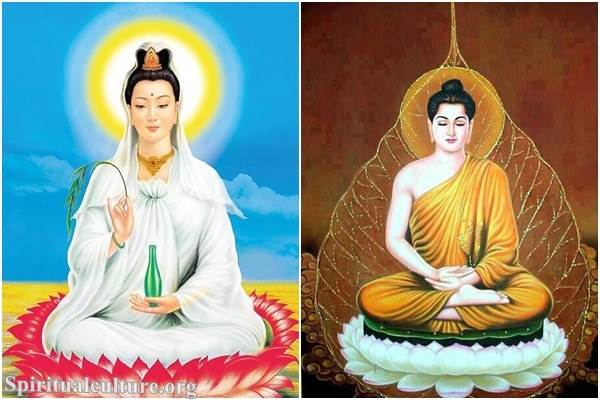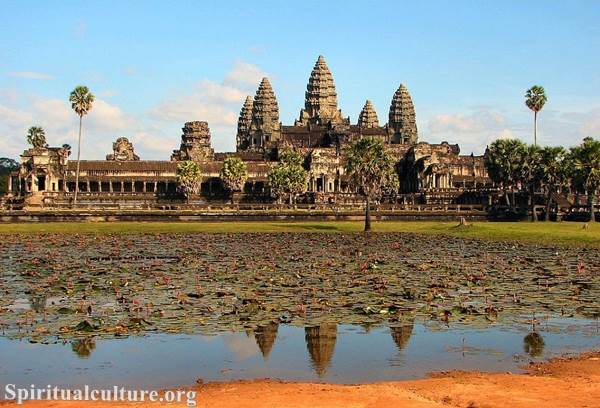Rebirth is one of the most enduring and debated teachings in Buddhism. Traditionally understood as the continuous cycle of birth, death, and rebirth (samsara), this idea has shaped the spiritual lives of countless Buddhists for over two millennia. Yet in today’s world—marked by scientific inquiry, interfaith dialogue, and rapid cultural shifts—the concept of rebirth is being reexamined, reinterpreted, and, for some, even redefined.
As Spiritual Culture, we invite you to journey into this profound and mysterious topic. What does rebirth mean in modern Buddhist thought? Is it a literal reincarnation of the self, a metaphor for spiritual transformation, or something else entirely? Why does it matter—and how does it guide the way we live, die, and awaken?
In this article, we will explore:
- Classical teachings on rebirth across Buddhist traditions
- How modern Buddhist teachers interpret rebirth
- The relationship between karma and rebirth
- Scientific and psychological views on the idea
- Why rebirth still matters—perhaps more than ever
Let us begin this inquiry not with certainty, but with openness—like the breath that rises and falls, ever returning, yet never quite the same.
The Classical View of Rebirth in Buddhism
Samsara: The Cycle of Existence
In early Buddhist teachings, life is portrayed as a wheel—samsara, the endless cycle of birth, aging, death, and rebirth. The Buddha taught that beings are born again and again across countless lifetimes, driven by craving (tanha) and ignorance (avijja).
“Neither in the sky, nor in the middle of the sea, nor by entering into mountain clefts—nowhere in the world—is there a place where one may not be overcome by death.”
— Dhammapada 128
In this view, each life is impermanent and conditioned by previous actions. Rebirth is not random, but shaped by karma—intentional actions of body, speech, and mind. One’s thoughts, deeds, and intentions create the conditions for future existence.
Anatman: No-Self and Continuity
A central paradox arises: if there is no fixed self (anatman), what is it that is reborn?
Buddhist teachings respond by emphasizing continuity without identity. Just as a flame lights another candle, yet is not the same flame, so too does consciousness flow from one life to the next. There is no unchanging soul, but a causal stream of conditions linking one life to another.
This delicate nuance differentiates Buddhist rebirth from other religious ideas of reincarnation where an eternal soul migrates. Instead, the rebirth is impersonal, contingent, and mutable.
Modern Buddhist Interpretations of Rebirth
A Spectrum of Beliefs
In the modern world, Buddhist perspectives on rebirth range widely:
- Literalists affirm traditional views of multiple lives
- Skeptics treat rebirth as symbolic or unnecessary for awakening
- Modernizers reinterpret rebirth psychologically or ethically
This diversity is especially pronounced in Western Buddhist communities, where many practitioners were raised outside the traditional cultural framework.
Insight from Thich Nhat Hanh
Vietnamese Zen master Thich Nhat Hanh offered a poetic view of rebirth:
“When conditions are sufficient, I manifest. When conditions are no longer sufficient, I hide. I don’t die. I just stop manifesting…”
For him, rebirth is not something that happens only after death, but every moment. A thought arises, a flower blooms, a smile continues in another’s heart. In this view, rebirth becomes relational, immediate, and deeply compassionate.
The Dalai Lama’s Perspective
The 14th Dalai Lama, spiritual leader of Tibetan Buddhism, continues to affirm the traditional belief in literal rebirth. However, he also encourages inquiry:
“If science proves something different from Buddhist teachings, then Buddhism must change.”
Thus, while personally maintaining belief in past and future lives, he opens the door for dialogue between faith and reason.
Karma and Rebirth: Intertwined Principles
The Engine of Continuity
Karma and rebirth are intimately linked. Without karma, rebirth becomes arbitrary; without rebirth, karma loses its long-term moral dimension. As the Buddha said:
“Beings are owners of their karma, heirs to their karma, born of their karma, related to their karma, abide supported by their karma.”
— Anguttara Nikaya 5.57
This profound teaching places responsibility on each individual. Our thoughts and actions ripple across lifetimes—not necessarily as punishment or reward, but as seeds bearing fruit when conditions are right.
Ethical Implications
In modern Buddhist ethics, karma-rebirth serves less as a cosmic ledger and more as a mirror of mindfulness. How we act today—how we treat others, how we respond to suffering—shapes our present moment and potentially our future consciousness.
Whether one takes rebirth literally or metaphorically, the invitation remains the same: Live with care, act with compassion, and awaken to the present.
Psychological and Scientific Perspectives
Carl Jung and the Deep Psyche
Swiss psychologist Carl Jung once speculated that ideas like rebirth might arise from the collective unconscious—archetypal patterns that transcend individual lifetimes. From this lens, rebirth is not a historical fact but a symbolic language of renewal, integration, and transformation.
Near-Death Experiences and Reincarnation Studies
In recent decades, researchers like Dr. Ian Stevenson and Dr. Jim Tucker at the University of Virginia have studied thousands of cases of children who seem to recall past lives. While their findings are controversial, they raise questions about consciousness that materialism cannot easily explain.
Rebirth as Metaphor for Growth
Many modern Buddhists—especially in mindfulness movements—see rebirth not as future lives, but as psychological renewal:
- Letting go of the old self
- Dying to the ego
- Being reborn into presence, compassion, or wisdom
Each moment becomes a seed of liberation.
Why Rebirth Still Matters
Beyond Metaphysics
Whether one believes in literal rebirth or not, the concept invites a long view of life. It stretches the timeline of personal responsibility, expands the horizon of compassion, and softens the fear of death.
Facing Mortality
In a world anxious about aging, dying, and loss, rebirth offers a vision of continuity amid change. We are not extinguished. We are transformed. Just as a cloud becomes rain, and rain becomes river, so too may our consciousness continue.
Living With Intention
Perhaps the most powerful teaching of rebirth is this: What you do matters. Not just now. But always. The consequences of our actions extend beyond the visible.
This doesn’t have to be cosmic. It can be simple:
- The kindness you show a stranger
- The wisdom you pass to a child
- The peace you make within yourself
These are all acts of rebirth. The world is remade—through you.
Reflect and Reimagine
So, what does rebirth mean to you?
For some, it is a literal truth across lifetimes. For others, it is a symbol of transformation. And for many, it is a sacred mystery—neither proven nor denied, but deeply felt.
As Spiritual Culture, we offer not final answers, but an invitation:
To live mindfully.
To die wisely.
To awaken again and again—into love, into truth, into being.
Whether rebirth lies ahead, within, or all around, may you meet it with courage and compassion.
Let each breath be a new beginning.
Let each step become your path of return.


